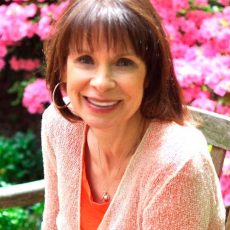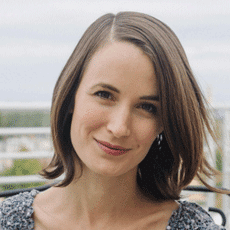
Written by Suzanne, Chief Health Officer and Resident Grandmother
I have done yoga as a form of exercise for many years. However, in the last two years I have discovered a new way to bring yoga into my everyday life, and my body feels healthier, younger (at 64 that can be a challenge in itself!), stronger, and more flexible. My yoga teacher, Amber Burke, has been responsible for that change. I’ve been so impressed with her expertise and the way she brings a mindfulness to every part of the body while doing yoga poses, and I asked her if she would be willing to share some of her knowledge with our readers. Below she offers some strategies to bring yoga and mindfulness into your movement every day.

Written by Amber Burke, Yoga Instructor
Chances are, no one taught us, growing up, the healthiest way of eating, or cleaning, or what we might most safely put on our skin. Of course, we members of the Gimme the Good Stuff community have educated ourselves, and made practices of preparing organic, nourishing foods, detoxifying our home environments, and using chemical-free skin products, despite the vigilance required, because we feel better physically when we do these things, and are responsible caretakers of ourselves and our families.
It is similarly likely that we were never taught how to arrange our bodies while we sit, stand, walk, and run, while we cook or write or pick up a child. Yet, it is possible, in every action, to choose to move in a way that feeds us or in a way that is destructive to our bodies. The effort required to learning the healthiest way to move, and to retain a consciousness of how we move throughout the day, pays both off physically and mentally.
What Happens When We Unfurl Our Spines
Yoga at its best addresses how we might bear weight in our feet and create the healthiest possible shape of the spine. In a yoga class, a variety of challenging poses serve as playgrounds in which we can practice rooting down through the feet and lengthening the spine, so that we have a shot at maintaining inner spaciousness—or more simply, “good posture”– in various situations that life has to offer.
Good posture is not just cosmetic– it supports our joints, organs, nervous system, and circulation. We might find that when our spines are well-aligned, our back and neck pain disappear, we can breathe more easily, and digest better. We might even think more clearly, and even feel happier, when we unfurl from our hunches. But what is healthy spinal alignment, and how can we find it?
Here’s How to Do a Simple Mountain Pose
To practice standing with a well-aligned spine, find a wall, and lean against it, bare feet a few inches away from the wall. Point your middle toes straight ahead and keep your knees slightly bent for now. Rest your hands on your belly, feeling the breath there, while you begin to notice which parts of you are touching the wall.
You want your butt and the bottom of your sacrum (the flat bone just above your buttocks) pressing back against the wall; your lower back curving slightly away from the wall; as much of your shoulder blades as possible against the wall, the tops of your shoulders moving back toward the wall; the back of the neck curving away from the wall, and the back of the head to the wall.
Your legs are bent to guard against hyperextension, which could alter the shape of your spine. Straighten them now not by tossing your knees back in space but by pressing down through your feet and lifting your kneecaps up toward the pelvis with active thighs. Stay here for several thorough breaths, rooting down not only through your heels but also through the balls of your feet in order to lift up through the crown of your head.
How Does It Feel?
Notice any resistance you might have to standing this way—because it’s new, or difficult, or because you feel that you are standing too confidently, in a way that will perhaps alienate friends and loved ones. Just notice these judgments.
Consider that new is never new for long; that difficult is not the same as unlearnable; that if you held this height in your life, instead of coming down to the level of your children or your slouching friends, you might inspire them to stand straighter, too.
Moving Away from the Wall
Take this pose—Mountain Pose–away from the wall. Can you hold your spine in the same shape? (You can check yourself by look at your back in a mirror: when you healthily aligned with your head and tail on the same line, and your shoulders back, none of your vertebrae will be sticking out; they all will be moving in toward the front of the body.)
Practice walking. Can you keep the relationship of the parts of the spine the same? Can you keep this shape of your spine when you are seated? When you run? When you bow forward to pick something (or someone!) up or down, imagine you are a Drinking Bird Toy —try moving the whole spine as a line, and hinging at the hips, rather than rounding your lower back to get down. If you are able to attend yoga class, through how much of your practice can you keep this shape of your spine?
Throughout the day, when you catch yourself slouching, or when you are suffering from back pain, take your back to the wall and recreate this spinal alignment. If that is too much, lie supine on the floor, and try to find the same shape: butt pressing back into the floor, lower back curving away from the floor, shoulder blades against the floor, back of the neck away from the floor, head heavy. With every breath, attempt to reach your head and your tail away from each other.
Teaching Your Family How to Stand Like a Yogi
Yoga is experiential; you need take nothing on faith. How does moving in this way feel? If you feel better when you move this way, keep doing it. Share it. Take your children to a kids’ or family yoga class, or don’t: any movement, done consciously, with an attempt to create inner spaciousness, can be yoga. (And if we move well all the time, we probably wouldn’t need to go to yoga class!)
Invite your children to lie on the floor with you, make a game of walking while balancing books on your heads. Encourage them to sit tall, to sit on the floor: or better yet, not to sit at all, but to move and love moving, and to be conscious of the sensations that accompany movement: How does that feel? And that? Where do you feel it?
A huge amount of physical suffering is preventable if we take it upon ourselves to learn how to move mindfully. This self-awareness is anything but self-centered; pain-free, open to breath, our hearts lifted, we will have freed more inner resources to attend to others; we will have more energy to devote ourselves to that which matters most in our lives.
Amber Burke writes for yogainternational.com and teaches at West End Yoga and privately in Lancaster, PA.
If you liked this post, sign up for our newsletter to be alerted when we publish new content like this!







Mike says
I found your post very useful! Thanks a lot!
I’d like to share another way to bring mindfulness to your daily life. This is Aware application. Look her for details: https://androidappsforme.com/aware-meditation-mindfulness-app/
Stress and depression, insomnia and catastrophic fatigue – it is possible to cope with all these problems through meditation. The Aware – Meditation & Mindfulness application will help you to quickly relax, repose, and gain strength.